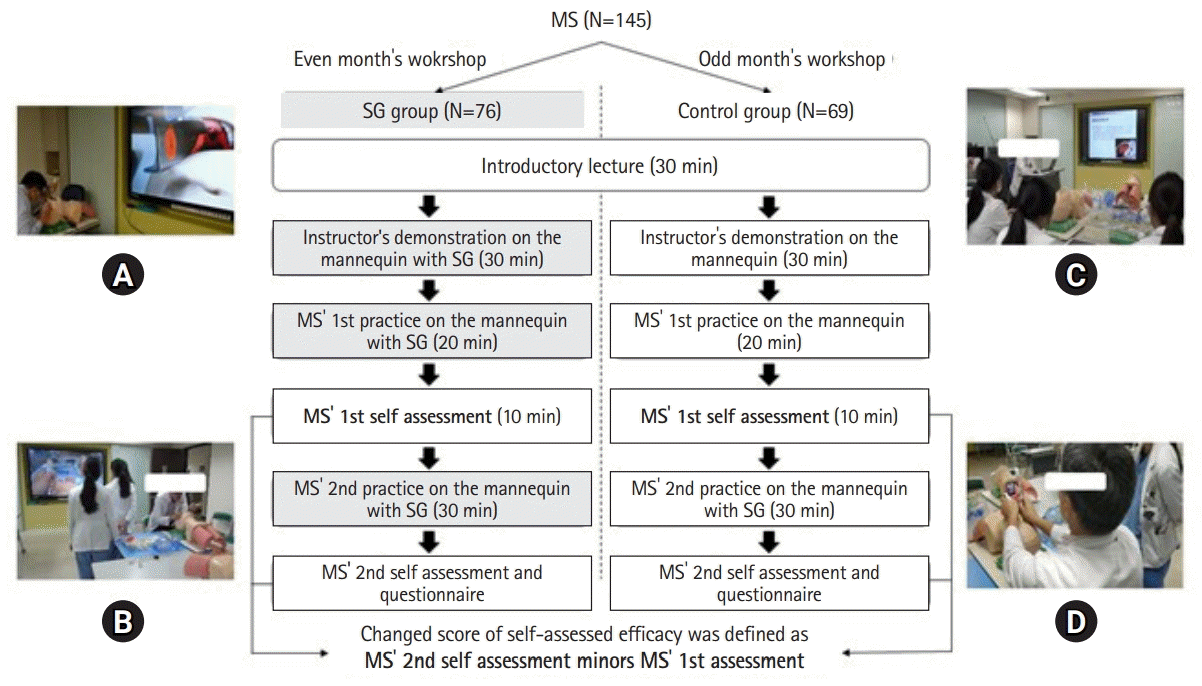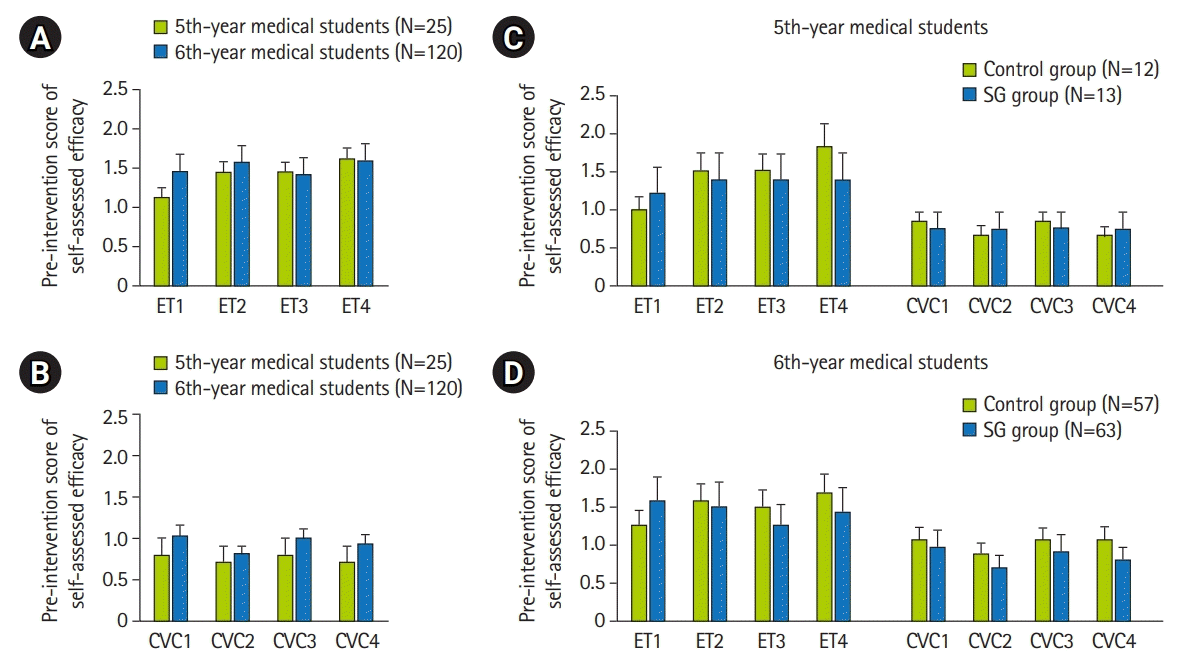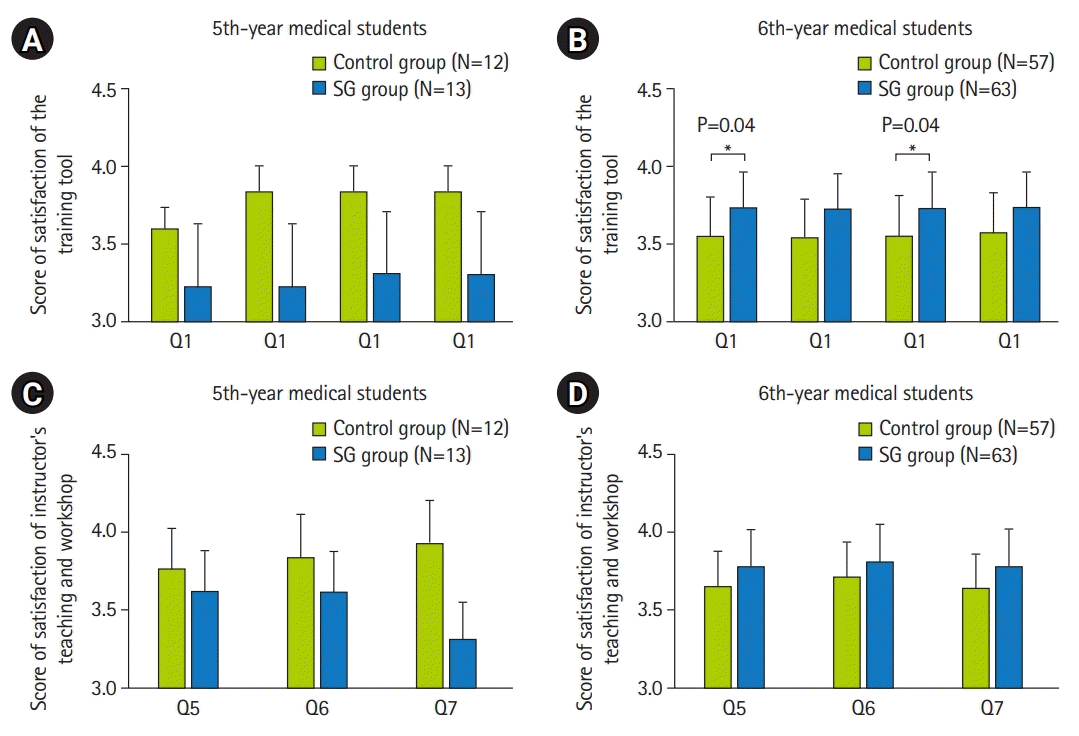Key results
In this study, most students considered themselves competent to complete steps of these procedures after the second round of practice, and the improvement of self-assessed efficacy was higher in students with the usage of smart glasses. As for the satisfaction of students with smart glasses with the training, 6th-year medical students showed higher satisfaction, contrary to the responses from 5th-year medical students.
Interpretation
Although medical students were more confident in performing ETI and CVC procedures after being familiar with smart glasses and receiving repetitive practice, there may be some inherent differences in learning ETI and CVC procedures via smart glasses between 5th- and 6th-year medical students.
For ETI and CVC procedures, we found that medical students often could not see the detailed practice of certain steps in these procedures, especially when the clinical environment was crowded. They could not see the operator’s point of view to explore the practice of certain steps related to anatomical positions. Even when the student was the operator, the instructors might not have been able to see the student’s point of view to determine problems in practice and provide real-time instructions.
As described by Chao et al. [
8,
9], the most common reasons for failure in ETI and CVC procedures of medical students were poor visualization of vocal cords, suboptimal placement of the laryngoscope in ETI, and the inability to find the vein and failure to pass the guidewire in CVC. These steps involve practices in space-limited fields, such as the opening of the mouth in ETI, and the sterile field of the puncture site in CVC. With smart glasses, students could practice on mannequins under the real-time supervision of instructors and see other operator’s practice in a first-person point of view through online video [
10].
For 5th- and 6th-year medical students, the effectiveness of smart glasses in assisting their learning of ETI and CVC procedures was different. First, their clinical exposure differs. The 6th-year medical students had received 1 year of clinical rotations and had the experience of overnight shifts with the senior residents, which gave them more access to critical clinical conditions, in which ETI and CVC procedures were involved. Furthermore, their level of competency was different.
Sixth-year medical students may already have an awareness of the key difficult steps of these procedures after clinical exposure and having experienced failure. By contrast, 5th-year medical students are naïve to the clinical environment without real failure experience of ETT or CVC. Therefore, in our study, the 5th-year medical students with smart glasses showed lower satisfaction than the control group.
In this study, there was a trend for the pre-intervention self-assessed efficacy of students in the control group to be higher than that of the smart glasses group for most steps of ETI and CVC procedures (
Fig. 2C,
D and
Supplement 8). However, in the second assessment (post-intervention score,
Supplement 8), there was a trend for the changes in scores of self-assessed efficacy in the smart glasses group to be higher than in the control group in most steps of ETI and CVC procedures (
Fig. 3A,
B and
Supplement 9). Instructors’ feedback mentioned the problem of adjusting the display by moving the head to ensure the recorded video was compatible with the student’s point of view. It is possible that in the students’ first practice with smart glasses, they were not familiar with smart glasses, which resulted in lower performance. However, by the second practice session, the benefits of smart glasses could be clearly observed. This problem could be resolved by providing instructions in advance on how to use the smart glasses.
A recent study revealed gender disparities in medical students’ procedural skills, such as ETI and CVC, during clerkship [
11]. However, this effect was not seen in either the control or smart glasses group in our study. This may be explained by the fact that smart glasses were used in the simulation environment, rather than in actual clinical practice. Future research may explore the effects of medical students’ gender on the clinical practice of procedural skills using smart glasses.
Limitations/generalizability
The assessment of student performance only included self-assessed efficacy, without objective evaluation by instructors. Previous experience with the procedure or usage of smart glasses should also be considered. In addition, this was a single-center pilot study, and many enrolled participants were 6th-year medical students. More 5th-year medical students should be enrolled to optimize the training workshop for 5th- and 6th-year medical students.
Conclusion
Smart glasses are a suitable simulation tool for training students to perform ETI and CVC procedures, improving self-assessed efficacy and increasing satisfaction with training, especially for procedural steps in a space-limited field. For junior students, training on procedures could be adjusted to reflect their limited clinical exposure. Before practicing skills with smart glasses, instructions on using new technology should precede to improve students’ satisfaction.





 PDF
PDF Citation
Citation Print
Print







 XML Download
XML Download